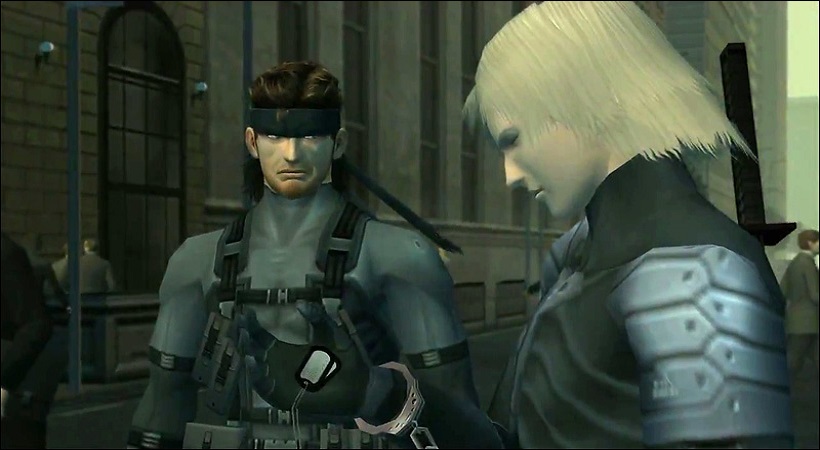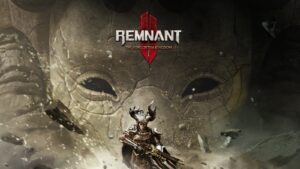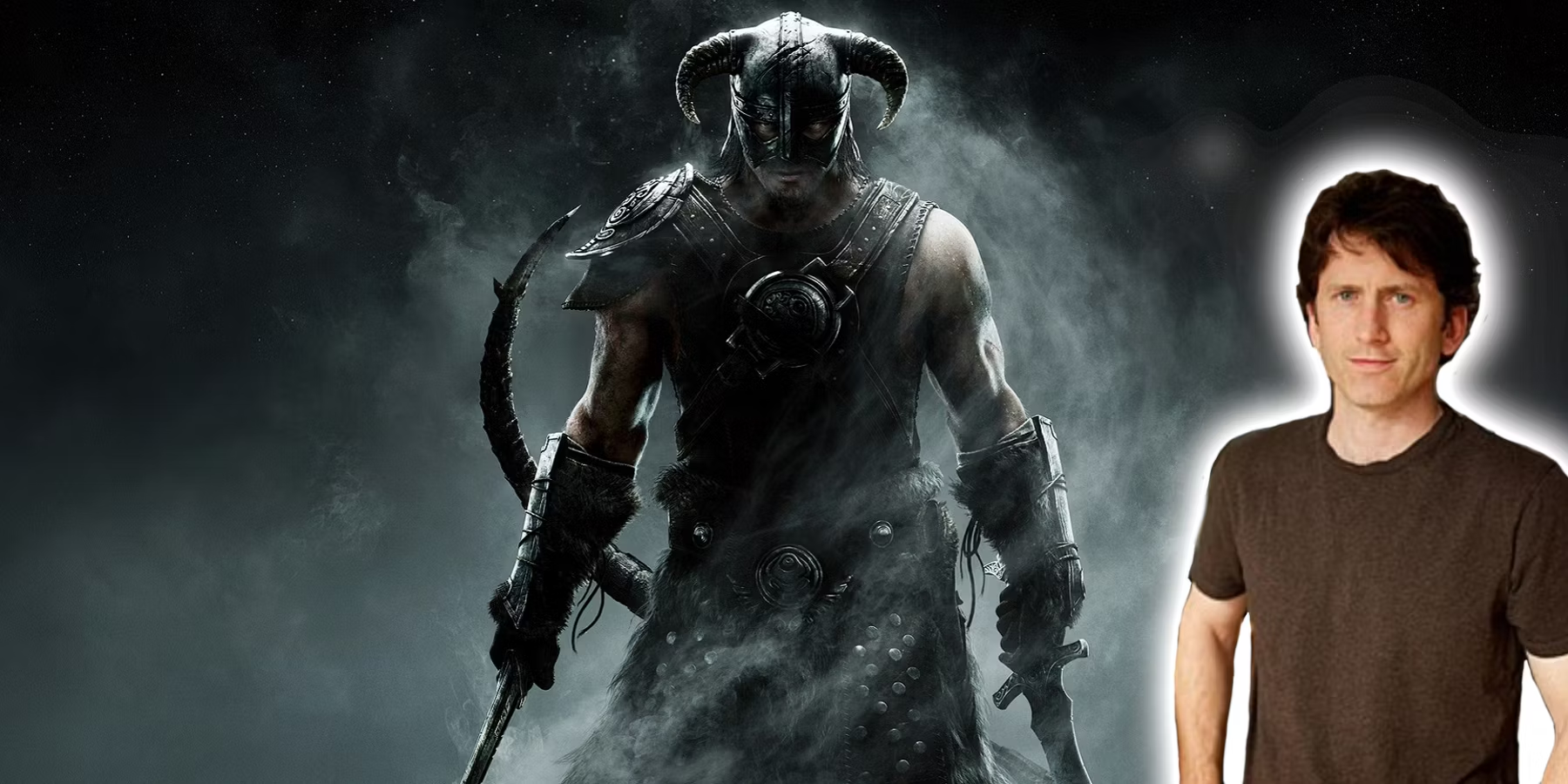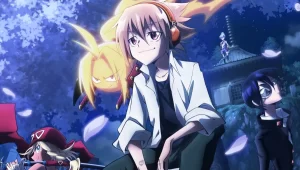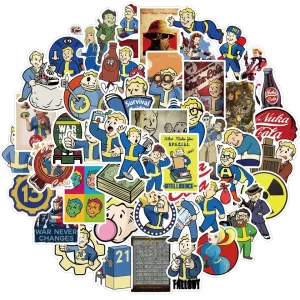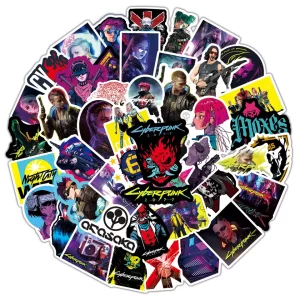The Metal Gear series of games has the reputation for being a driving force behind video games adopting more “cinematic” storytelling. If 1998’s Metal Gear Solid was the pioneer of the cinematic game, then its sequel, 2001’s Metal Gear Solid 2: Sons of Liberty showed the world what could be done with stories in games. It’s truly unfortunate that despite the legacy that MGS 2 would leave behind, it seems that no one has been able to truly top the mad genius on offer from director Hideo Kojima.
Released in late 2001 originally on the PlayStation 2 console, Metal Gear Solid 2 is a continuation of the storyline of famous stealthy super soldier Solid Snake. This sequel contained vastly superior visuals and gameplay along with highly interactive scenery as compared to its predecessor. The story consists of two chapters, the Tanker and the Plant, the previous being released as a demo with another Kojima game, Zone of the Enders. At the time, the story received mixed reception from fans who were angered by a twist in the early part of the game; but over time, Metal Gear Solid 2 has taken its place as one of the best entries of the series.
The following contains spoilers for all Metal Gear games.
Bait and Switch: A Marketing Risk
The term “bait and switch” refers to the illegal marketing practice of advertising one product to get people into the store (or in this case to buy a game) and then delivering a wholly different product. As it pertains to Metal Gear Solid 2, the bait would be that all promotional materials (including some screenshots that were purposefully misleading) showed returning character Solid Snake to be the main protagonist.
Imagine that the year is 2001 and hype for a new Metal Gear game was reaching a fevered pitch. The original game was a major seller for the original PlayStation, and fans were nearly rabid in anticipation. This led to massive success of Zone of the Enders due to a special demo disk containing MGS 2 allowing players an early glimpse into the new game. The internet was still in its infancy, so these fans devoured every new piece of information gleaned from any source available. There were magazines who started regular “MGS 2 Watch” sections.
The long awaited day finally arrived, and the public finally got their hands on the game. Sales were good, bolstered by outstanding review scores. After the player reaches the end of the Tanker chapter, the tanker sinks and Solid Snake seemingly dies. The Plant chapter begins with Colonel Campbell, Snake’s former CO, giving instructions to a man with the code name Snake, but there is something wrong. This Snake is too skinny, his voice different. This character may be different, but surely Kojima would allow players to once more play as Solid Snake one more time. As the game went on, players lost hope.
This twist is legendary in video game circles. There is no way that this kind of secret would be able to be kept in this day of instant internet news and skittish publishers. In 2001, holding this secret would have been easier, but not by much especially after reviewers got their hands on the game. Against all odds, this twist remained a secret and set the stage for a masterpiece of shattering anticipations.
The Player: Expectations Destroyed
Players entered the game salivating at the prospect of another adventure with Solid Snake, but what they were given was a small taste before Snake would be relegated to a supporting role. What the player would then have presented to them was a story that not only would shift the main character, Raiden’s worldview, but their own as well. The beginning of the Plant chapter begins almost as Metal Gear Solid did in 1998. With Raiden starting a stealth mission in a terrorist controlled area with only his sneaking suit and wits in his inventory. As the story progresses, Raiden interacts with Plisken (who eventually and unsurprisingly turns out to be a disguised Solid Snake) and acts as a sort of player proxy; viewing Snake as the mythical super hero that the player does. More and more as the story progresses, it becomes clear that the similarities to the original game were not just surface coincidences, but as a commentary the effect of Virtual Reality on the training of soldiers.
The player goes through much of the same sort of journey as Raiden. The game begins with player expectations being that the main character is going to be Solid Snake. The first of many expectations to be destroyed is the switch to Raiden as a player character. The main bulk of the Plant chapter otherwise consists of what the player expects from the gameplay, with some story and game broken up by boss battles. This time, however, except for the Fatman boss, Raiden is unable to effectively defeat any of the bosses. This is especially clear with the fight with Fortune which takes place in a small enclosed room. Fortune has a tantalizingly small heath meter, but shots just deflect around her. This fight is ended when enough time passes, and the story continues.
Then comes the major destruction of both Raiden and the player’s expectations. After another call back to the original game, with a torture scene that is almost shot for shot from Metal Gear Solid, but Kojima uses this explicit call back to go off the rails. This is when it is revealed that the Plant is an AI server that controls all information on the planet at the behest of a secret cabal that runs the world. This is also where the 4th wall begins to crack and break, as glitches begin not only in the game play, but from the AI that has been your support through the mission. The support team begins to instruct the player to “Take a break” or “Turn off the console” among many non-sequiturs that have the player beginning to question what is going on. By the end of the game, Raiden throws away a set of dog tags with the player’s name on them, signifying that he is no longer a puppet. The player also likewise is forced to take an honest look at how they have been a puppet for the duration of the game, or for that matter any game.
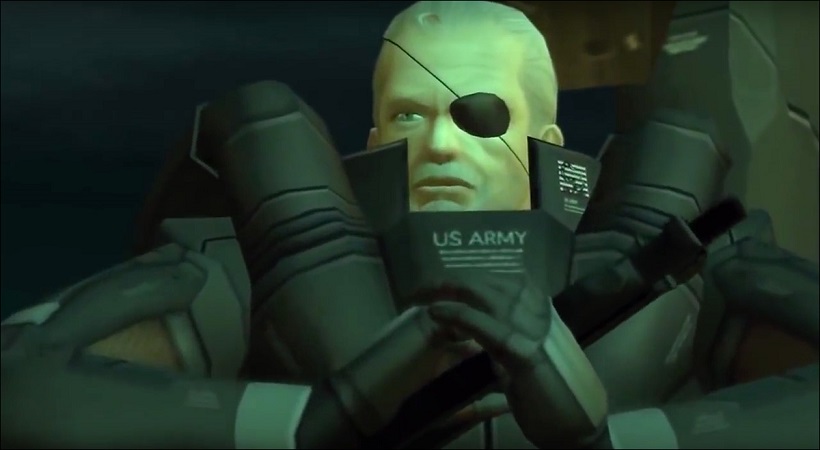

The Antagonist: Secretly Right?
A main theme of the Metal Gear Solid series is that enemies are just people on the opposite side of the conflict. There is no real right or wrong, just varying shades of grey. Vary rarely has the bad guy in one of these game been a mustache-twirling villain. In fact in many games, it seems like the main character is directly opposing the better option. Metal Gear Solid had Liquid Snake as the villain, only wanting to continue what he saw as the will of his father, Big Boss; and by proxy as we would find out later, a warped version of the Boss’ will to create an independent nation for soldiers without a nation.
Metal Gear Solid 2 and 4 would both see the antagonist trying to free the world from a shadowy group who controlled both information and wars for the entire world; effectively freeing everyone from a slavery of the internet and the Patriot’s network. This places a slight condemnation on the player and protagonist for blindly following orders for no other reason than, as Liquid Snake admonishes Solid Snake, “You enjoy all the killing.” This applies to video games and their players who have made popular games that have frankly ridiculous amounts of violence ever since an Italian plumber jumped on his enemies heads and flattening them.
The only thing that keeps the villain in Metal Gear Solid 2, Solidus Snake or former US President George Sears, from being totally sympathetic is the fact that he used to recruit and use children soldiers, including at one point Raiden himself. This revelation is one more string manipulating Raiden toward seeking revenge instead of thinking for himself. The final confrontation between the two contains a speech from Solidus which seemingly opens Raiden’s eyes that this has all been one big simulation to turn him into Solid Snake, just as the player has most likely been playing Raiden the same way they would’ve played as Snake up to this point.
The final battle, a sword duel atop New York’s Liberty Hall, instead of being the normal heel/face fight of many games before or since is played as a fight to the death between two men on opposite sides of a conflict. This fight uses a weapon that Solid Snake would never use—a sword, just a thematic symbol of Raiden stepping out from the shadow of the legendary hero and entering a life of his own. The fight ends with a mortally wounded Solidus, in his last living action, reaching toward the statue of George Washington: one of the men who brought freedom to the US.
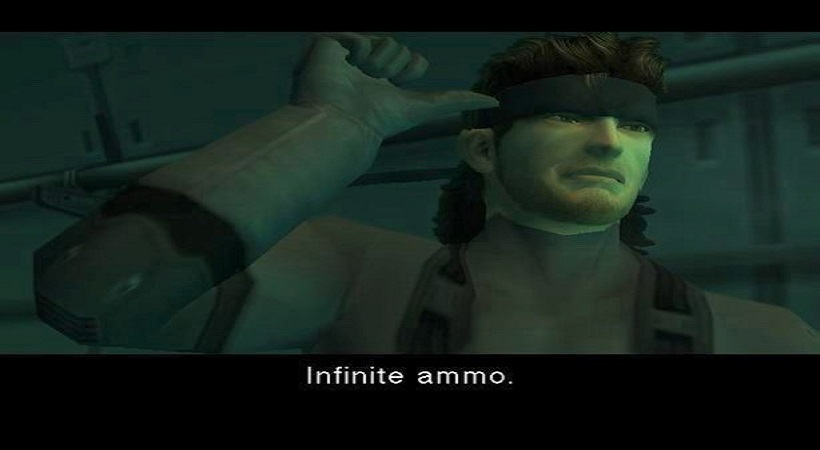

The Story: Weaponized Insanity
From beginning to end, Metal Gear Solid 2 is a hard story to take on face value. Heavily influenced by anime and Hollywood movies, the audience is taken on a ride dealing with mechs, vampires, fat men on roller scares, a possessed arm, and long speeches about the dangers of nuclear proliferation. If any of that seems strange, you aren’t alone. Video games have never been held to the same strict standards of continuity as movies or books have been. Returning characters are in places that seem completely opposite from where they were at the end of Metal Gear Solid.
Solid Snake and Otacon have started an anti nuke group that as far as the story says is just the two of them. Apparently, even though neither are rich, they are able to run military ops simply because Snake is a legendary soldier and Otacon is a magic hacker who is able to do anything with enough techno-babble and a computer. This is not the hardest suspension of disbelief.
Snake infiltrates an oil tanker which is housing a new anti-Metal Gear Metal Gear, the series titular walking nuclear mech. Moments after Snake’s insertion, the tanker is taken over by Russians. Snake finds the Metal Gear, named RAY, and takes pictures of the machine before it is hijacked by series mainstay Revolver Ocelot and the spirit of Liquid Snake in Liquid’s severed arm (don’t ask). The tanker sinks and Snake may or may not have died, it’s not made clear.
A couple of years pass and a plant is erected where the tanker was sunk to clean up the massive oil spill that was left. The plant, or Big Shell, has been taken over by Dead Cell (the bosses of the game) led by Solid Snake who has been deemed dead since the tanker incident. The terrorists have taken hostages including the US President. Raiden is directed to meet up with a Navy SEAL team that is trying to rescue the president. Long story short, the SEALs are killed except for LTJG Plisken, who looks like Solid Snake, and it falls on Raiden to rescue the President. Raiden does some stuff and is finally able to meet the President who drops a lot of knowledge about the Patriots (or la-le-lu-le-lo for some reason) a secret group of men that have been shaping human history behind the scenes. The POTUS dies of a heart attack. Plisken, who turns out to be Solid Snake (SURPRISE!!!), and Otacon then send Raiden after Otacon’s sister Emma. Emma is rescued and then dies after giving the virus she wrote to sever the Patriots’ network. Otacon cries and brings up some strange incestuous backstory that is really dumb.
Snake knocks out Raiden and gives him to Dead Cell who torture him and tell him that the belly of the Big Shell is an AI designed to control information on the internet and Raiden has been a pawn by the Patriots the whole time. He escapes and runs naked and weaponless through the belly of the Plant. He meets Snake once more who has his infinite ammo bandanna and gives Raiden a sword. The enemies are defeated, Revolver Ocelot escapes with the AI code, and the good guys walk off into the sunset (?).
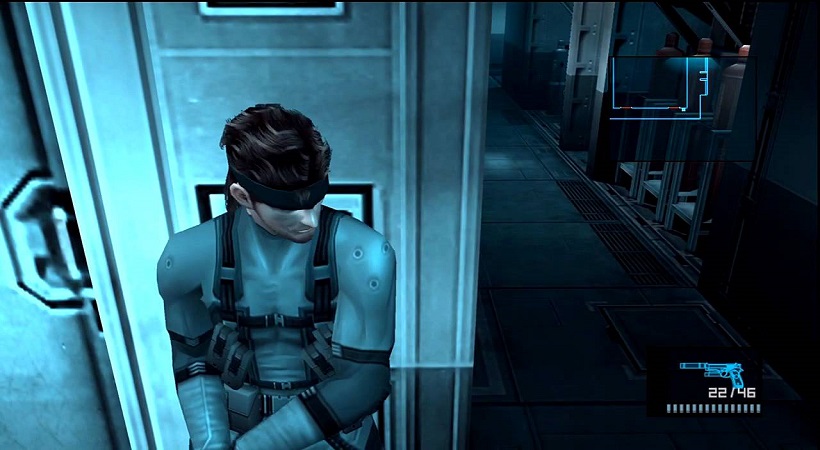

The Myth: The Eye of the Beholder
Raiden’s relationship with Solid Snake is a main focus. It is well established in the SpecOps community that Snake is this legendary soldier, veteran of numerous conflicts. Early on, Raiden reveals that a large portion of his training background was VR simulations of Solid Snake’s mission on the Tanker and Shadow Moses Island. At one point, Raiden states that the VR simulations are “…indistinguishable from the real thing.”
During the mission, many of Raiden’s interactions with Snake are the opposite of a legendary soldier. The man is hurt, sells Raiden out to Dead Cell, and is a bit of a jerk. He makes no secret that he views Raiden as less than him. This continues until the myth has been debunked. When Snake shows up at the end in his full uniform, and acts like the super soldier of myth, it’s a hollow showing since Raiden is able to hold his own.
Myths are an important way that cultures pass down their experiences to the new generations. Humans love a tall tale, but it’s disappointing to see these myths shattered. Normal people are boring, but supermen are fascinating. This is a large portion of Raiden’s journey.
17 Years Later: Still Relevant
The world has changed substantially since 2001. Many civil liberties have been disposed of. The government has very wide ranging powers of surveillance of its citizens. Metal Gear Solid 2 and its themes of censorship on the internet and government manipulation and how our experiences are chosen to continue to exist seems more relevant every passing year. Our world may not look exactly like the world created by Hideo Kojima, but many of the themes explored are good things to debate about our world. It’s not often that a game creates so much thought and stays with players for as long as Metal Gear Solid 2: Sons of Liberty. If you haven’t checked it out now, it’s highly recommended.





